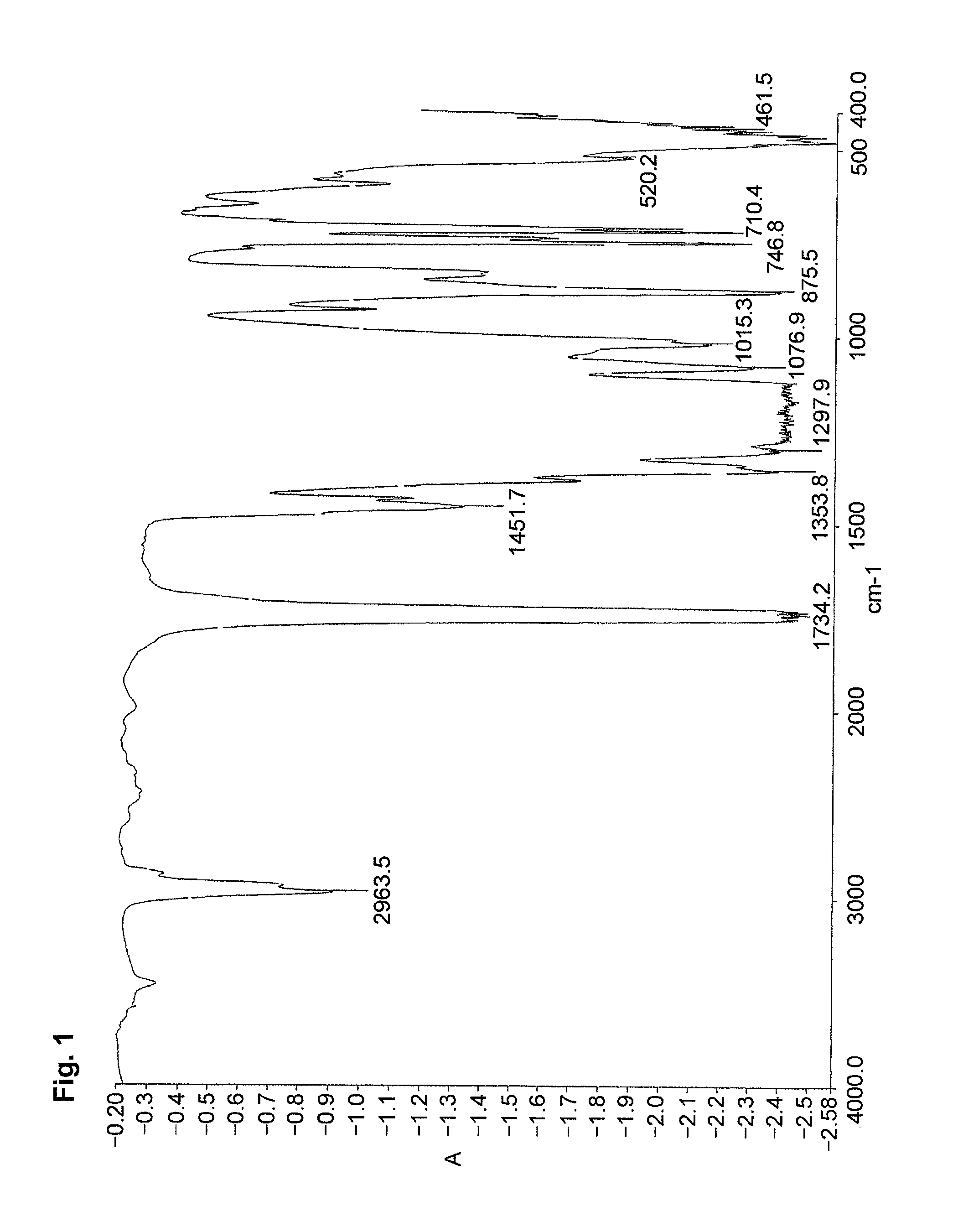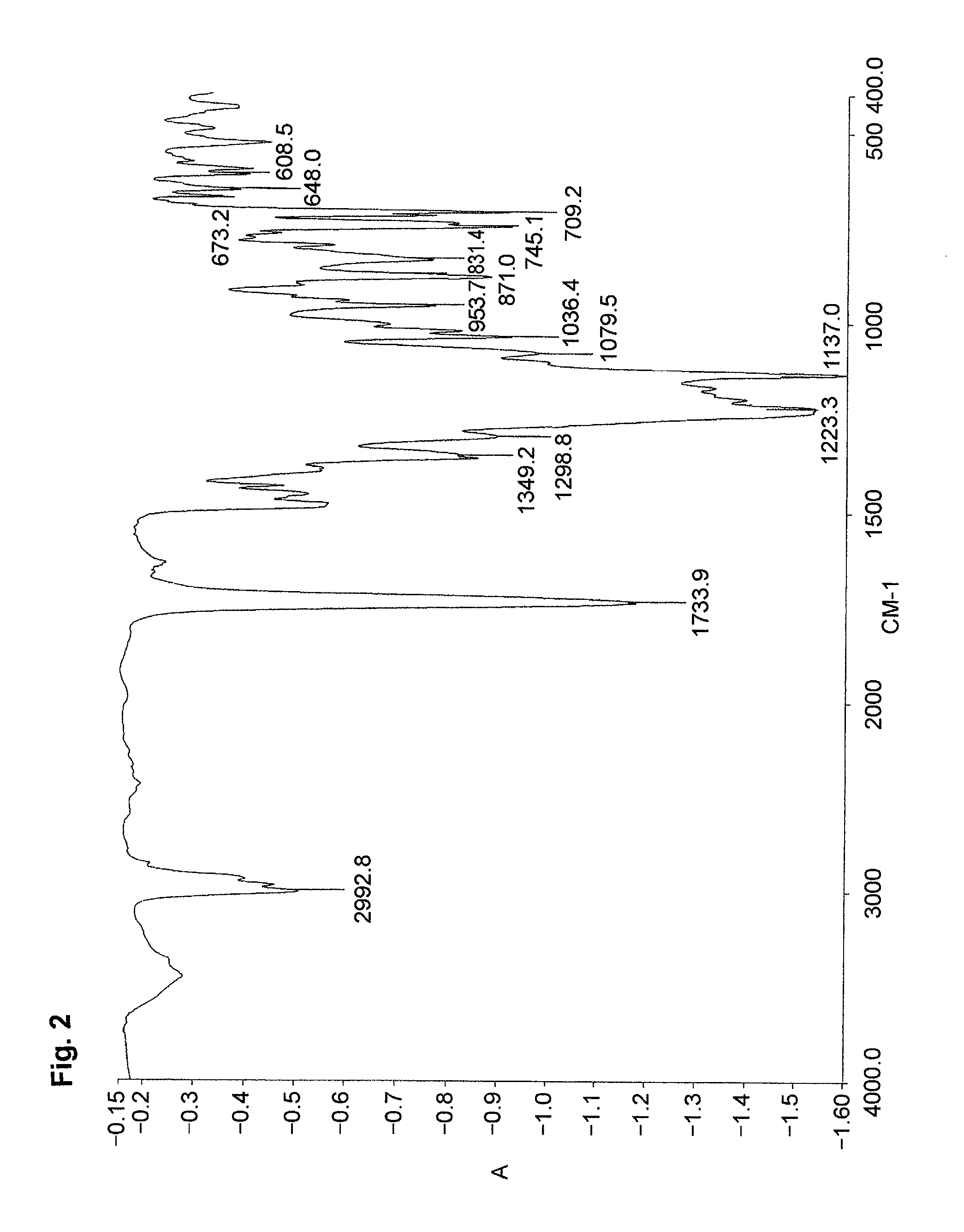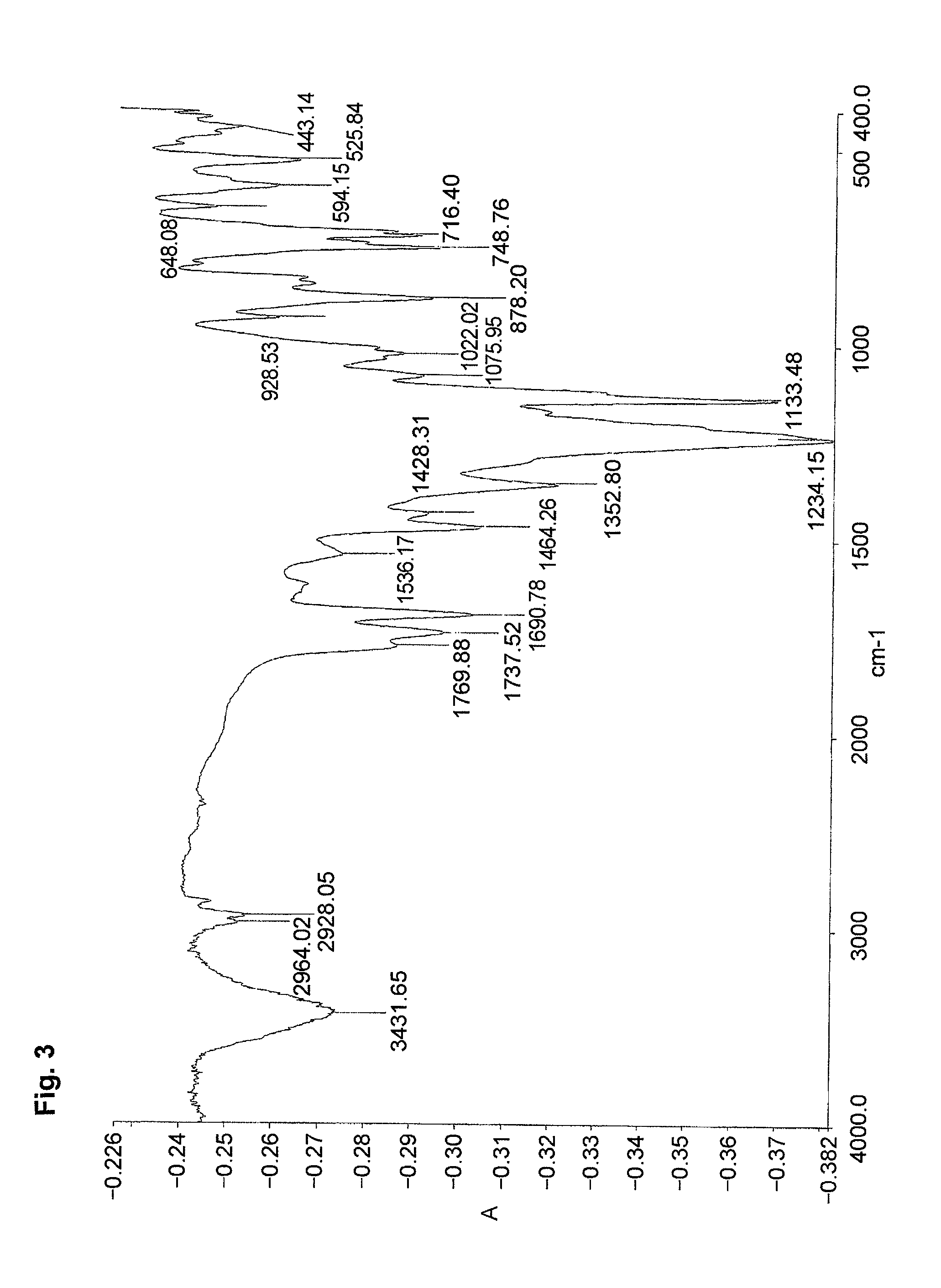Fluoropolymer having S-sulfate group and water/oil repellent composition containing the polymer
a fluoropolymer and polymer technology, applied in the field of new polymer, can solve the problems of low radical polymerizability, insufficient polymer to be used as water- and oil-repellent agent, vinyl mercaptacetate, etc., and achieve excellent water- and oil-repellency.
- Summary
- Abstract
- Description
- Claims
- Application Information
AI Technical Summary
Benefits of technology
Problems solved by technology
Method used
Image
Examples
synthetic example 1
Preparation of 2-Bromoethyl Methacrylate
[0069]An egg-plant type flask which contained benzene (500 ml) was charged with 2-bromoethanol (46.7 g, 0.37 mol) and triethylamine (29.1 g, 0.29 mol) and was capped with a rubber plug. Methacryloyl chloride (30 g, 0.29 mol) was added to the flask in ice water, using a syringe while being stirred with a stirrer. The stirring was continued for some time, and then, the mixture was warmed to a room temperature and was stirred overnight. Triethylamine hydrochloride was removed by suction filtration, and the mixture was washed three times with water (300 ml) to extract the unreacted substance. The mixture was transferred to a conical flask and was dried over anhydrous sodium sulfate. The mixture was concentrated by an evaporator under reduced pressure and purified by vacuum distillation to give a colorless and clear liquid (33.8 g) (yield: 61%).
[0070]The resultant product was identified by the IR spectrum.
Preparative Example 1
Preparation of BMS Mon...
example 8
Preparative Example 8
Preparation of 3FMA-MMAS Copolymer
[0085]An ampoule tube was charged with DMF (8.5 g) and water (2 g) to dissolve the monomer (MMAS monomer) (0.57 g, 2.3 mmol) synthesized in Preparative Example 2,2,2,2-trifluoroethyl methacrylate (3FMA) (M-1110 manufactured by Daikin Chemicals Sales Co., Ltd.) (1.56 g, 9.2 mmol) and azoisobutyronitrile (18 mg, 0.11 mmol). The ampoule tube was deaired by freeze-decompression, displaced with nitrogen and sealed in vacuum. The ampoule tube was agitated at 60° C. for 20 hours. The reaction solution was poured into a large amount of water to deposit a white precipitate. The white precipitate was filtered in vacuum and dried in a vacuum desiccator to give a product (1.07 g) (polymer yield: 50%). The product was identified by the IR spectrum and the content of sulfur.
[0086]The composition of the copolymer was almost the same as the composition of the charged monomers [3FMA / MMAS=4 / 1 (in molar ratio)].
example 9
Preparative Example 9
Preparation of 3FMA-MMAS Copolymer
[0087]An ampoule tube was charged with DMF (8.5 g) and water (2 g) to dissolve the monomer (MMAS monomer) (0.99 g, 4 mmol) synthesized in Preparative Example 2,2,2,2-trifluoroethyl methacrylate (3FMA) (M-1110 manufactured by Daikin Chemicals Sales Co., Ltd.) (1.01 g, 6 mmol) and azoisobutyronitrile (16.4 mg, 0.1 mmol). The ampoule tube was deaired by freeze-decompression, displaced with nitrogen and sealed in vacuum. The ampoule tube was agitated at 60° C. for 20 hours. The reaction solution was poured into a large amount of water to deposit a white precipitate. The white precipitate was filtered in vacuum and dried in a vacuum desiccator to give a product (0.86 g) (polymer yield: 43%). The product was identified by the IR spectrum and the content of sulfur.
[0088]The composition of the copolymer was almost the same as the composition of the charged monomers [3FMA / MMAS=1.5 / 1 (in molar ratio)].
PUM
| Property | Measurement | Unit |
|---|---|---|
| temperature | aaaaa | aaaaa |
| temperature | aaaaa | aaaaa |
| temperature | aaaaa | aaaaa |
Abstract
Description
Claims
Application Information
 Login to View More
Login to View More - R&D
- Intellectual Property
- Life Sciences
- Materials
- Tech Scout
- Unparalleled Data Quality
- Higher Quality Content
- 60% Fewer Hallucinations
Browse by: Latest US Patents, China's latest patents, Technical Efficacy Thesaurus, Application Domain, Technology Topic, Popular Technical Reports.
© 2025 PatSnap. All rights reserved.Legal|Privacy policy|Modern Slavery Act Transparency Statement|Sitemap|About US| Contact US: help@patsnap.com



